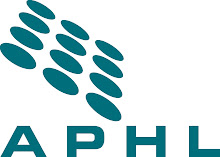Scientists in Europe are working on a new computer model that would reportedly predict chemical risk. While Europe is years ahead of the US in toxicity research and banning of harmful chemicals, many people remain skeptical about computer models. Historically, models used to predict risk are fraught with errors and unreliable -- characteristics that can only help manufacturers to win approval of new chemicals.
If this new computer model can actually identify hazards in chemicals before they are brought to market, it will provide a much needed solution to an ongoing problem. Animal testing is expensive, time consuming and politically sensitive. Chemical manufacturers do not want to jump through hoops to bring their product to market.
Unlike Europe, which operates under the precautionary principle, in the US there are few barriers to new chemicals entering the market. US regulations under the Toxic Substances Act (TSCA) are weak at best. In fact, only three chemicals have been regulated under TSCA since it passed in 1976, because of a loophole in the statute relating to unreasonable risk. Even asbestos, a known carcinogen linked to tens of thousands of cases of mesothelioma, has yet to be banned outright.
The proposed computer model may sound like a magic bullet, but it can’t replace testing conducted by experienced toxicologists and other laboratory professionals. What we need is more toxicity research to better understand the effects of chemicals on people.




